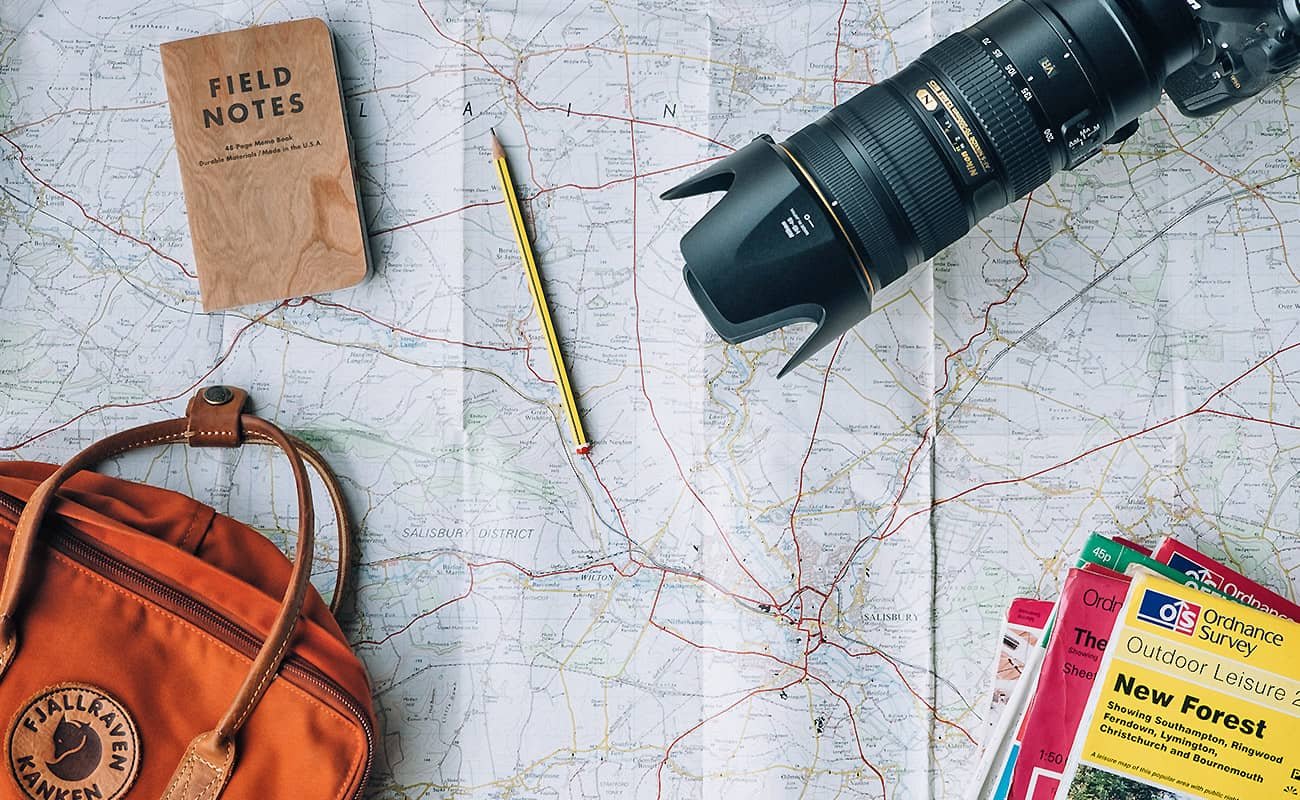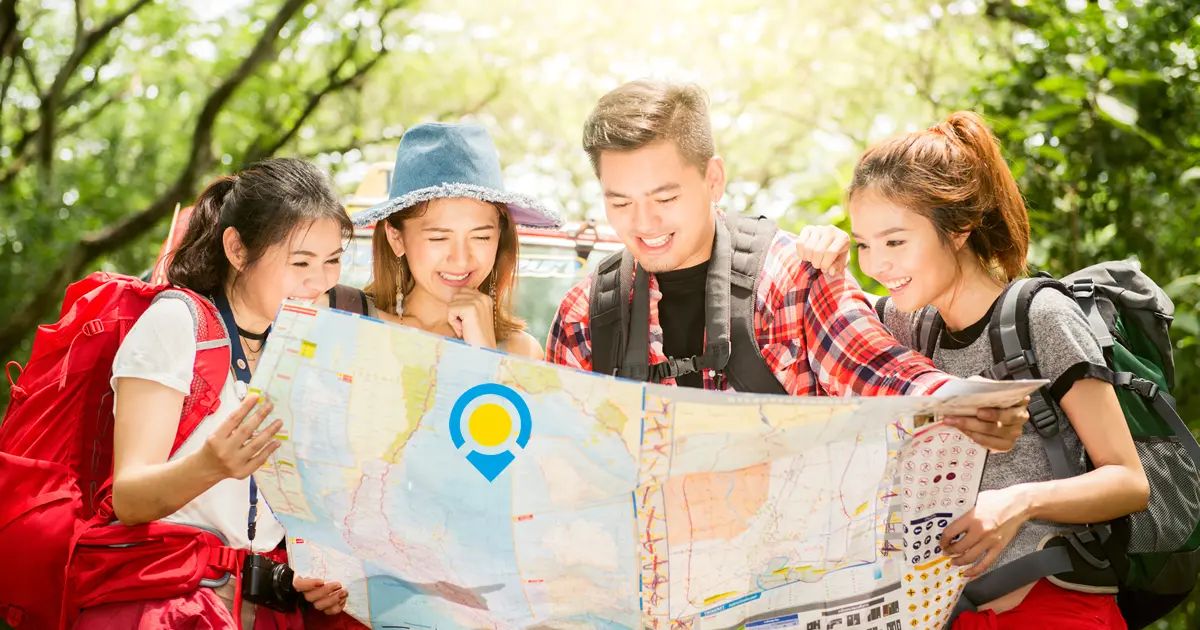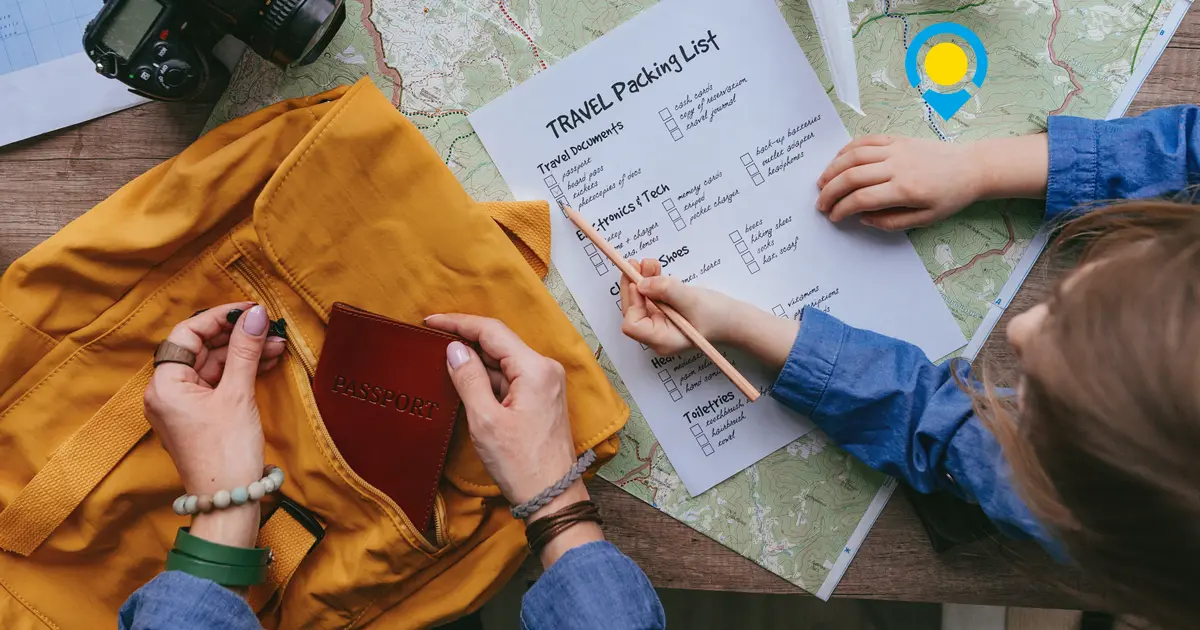
The allure of a new destination-the promise of unfamiliar landscapes, vibrant cultures, and unforgettable memories-is a powerful motivator. From the first spark of inspiration to booking the flight, the anticipation of travel is a joy in itself. Yet, for many, the excitement can quickly be overshadowed by the daunting task of preparation. What do I pack? What documents do I need? Have I forgotten anything crucial? These questions can transform pre-trip excitement into a whirlwind of anxiety. Fear not, fellow adventurers! This comprehensive guide is designed to transform that pre-travel stress into serene confidence. We’ve distilled the entire journey of trip preparation into three essential pillars: what to Pack, what to Prepare, and what to Plan. By systematically addressing each element, you’ll ensure that every detail is covered, leaving you free to savor every moment of your adventure from the moment you leave your doorstep. Consider this your definitive roadmap to a truly hassle-free and enjoyable travel experience.
I. What to Pack: Your Portable Toolkit for Adventure
Packing is an art form, a delicate balance between necessity and convenience. The goal isn’t just to fit everything into your luggage, but to assemble a functional wardrobe and toolkit that anticipates your needs without weighing you down.
The Essentials: Carry-On vs. Checked Baggage Strategy
Before you even think about what goes into each bag, establish a clear strategy for your carry-on and checked luggage. Your carry-on is your lifeline; it should contain everything you absolutely cannot afford to lose or be without, even if your checked bag goes missing. This includes:
- Valuables: Jewelry, expensive electronics, and important documents (passport, visas, wallet) should always be in your carry-on.
- Essentials: Any necessary medications (with copies of prescriptions), a change of clothes, basic toiletries, and anything that would be catastrophic to lose upon arrival.
- Entertainment: Books, e-readers, headphones, and charged devices for the journey.
For checked baggage, be mindful of airline liquid rules, weight limits, and prohibited items. Investing in a lightweight, durable suitcase can save you from unexpected overweight baggage fees. Also, consider packing cubes-they are game-changers for organization, compressing clothes, and making it easier to find what you need without rummaging.
Clothing: Layering and Versatility

The golden rule of travel attire is versatility. Research your destination’s climate thoroughly, not just the average temperature, but also daily fluctuations, humidity, and precipitation.
- Weather-Appropriate Attire: If you’re heading to a tropical locale, lightweight, breathable fabrics like cotton or linen are key. For colder climates, focus on layers: a moisture-wicking base layer, insulating mid-layers (fleece or down), and a waterproof/windproof outer shell.
- Activity-Appropriate Clothing: Will you be hiking, swimming, attending formal dinners, or lounging on the beach? Pack specific items for these activities. A pair of versatile dark jeans or trousers, a few comfortable t-shirts, and a dressier shirt or top can take you from casual sightseeing to a nice dinner.
- Fabric Choices: Prioritize quick-drying and wrinkle-resistant fabrics. Merino wool is excellent for socks and base layers as it wicks moisture, regulates temperature, and resists odor. Synthetics are also great for quick drying. Avoid heavy cotton items that take ages to dry and retain moisture.
- Undergarments, Sleepwear, Socks: Pack enough for your trip, plus a few extra pairs of socks. Consider performance socks if you’ll be doing a lot of walking or hiking.
- Outerwear: A packable rain jacket is almost always a good idea, regardless of destination. For cooler weather, a lightweight but warm jacket that can be easily layered is ideal.
- Swimwear: Even if it’s not a beach vacation, many hotels have pools or hot tubs.
- Shoes: This is crucial for comfort. Bring at least two pairs of comfortable walking shoes (e.g., sneakers, supportive sandals) so you can alternate them and give your feet a break. If you need something dressier, pack a single versatile pair. Break in any new shoes before your trip!
Toiletries & Personal Care: Miniaturizing Your Routine
Unless you’re planning a very long trip, you don’t need your entire bathroom cabinet. Opt for travel-sized versions or decant your favorite products into reusable silicone bottles (under 3.4 ounces/100ml for carry-on liquids).
- Basic Hygiene: Toothbrush, toothpaste, floss, shampoo, conditioner, body wash/bar soap. Consider solid toiletries like shampoo bars to save space and avoid liquid restrictions.
- Skincare Essentials: Moisturizer, sunscreen (especially vital for sunnier destinations), lip balm with SPF.
- Haircare: A small brush or comb, and travel-sized styling products if absolutely necessary.
- Feminine Hygiene Products: Pack what you need, as specific brands might not be available abroad.
- Shaving Kit: Travel-sized shaving cream and razor.
- Small Mirror: Handy for quick checks or if bathroom lighting is poor.
- Contact Lens Supplies: If applicable, bring enough solution and cases for your entire trip.
Health & Wellness: The Mini-Pharmacy on the Go
A personal medical kit can be a lifesaver, especially in places where pharmacies might be hard to find or lack familiar brands.
- Prescription Medications: Pack these in their original containers with clear labels. Bring copies of prescriptions, and if traveling internationally, a doctor’s note explaining why you need them. Research if your medications are legal in your destination country.
- Over-the-Counter Essentials: Pain relievers (ibuprofen/acetaminophen), allergy medication, antacids, anti-diarrhea medication, motion sickness pills.
- Basic First-Aid Kit: Band-aids, antiseptic wipes, sterile gauze, medical tape, small scissors, tweezers, hydrocortisone cream for bites/rashes.
- Hand Sanitizer: Indispensable for staying clean on the go.
- Insect Repellent: Crucial for mosquito-borne illness prevention in many regions.
- Any Specific Dietary Supplements: If you rely on these, pack enough for your trip.
Electronics & Connectivity: Staying Powered and Connected
In our digital age, electronics are travel companions. Ensure you have the right gear to stay connected and capture memories.
- Phone and Charger: Your primary communication and navigation tool.
- Portable Power Bank: A fully charged power bank can save you from a dead phone in a crucial moment.
- Universal Travel Adapter: Research the plug types and voltage in your destination countries. A universal adapter with USB ports is highly recommended.
- Headphones: Essential for flights, public transport, or simply unwinding. Noise-canceling headphones are a luxury for long journeys.
- Camera Gear: If you use a dedicated camera, pack extra batteries, a charger, and sufficient memory cards. Consider a small, protective case.
- Laptop/Tablet: Only bring if absolutely necessary for work or extended trips, as they add weight and are a target for theft.
- Portable Wi-Fi Device (Hotspot) or Local SIM Considerations: Decide how you’ll stay connected. A portable hotspot offers convenience, while a local SIM card (or eSIM, if your phone supports it) often provides the most cost-effective data.
Miscellaneous Comforts & Conveniences
These small items can make a big difference in your overall comfort and ease of travel.
- Travel Pillow, Eye Mask, Earplugs: Essential for sleeping on planes, trains, or in noisy accommodations.
- Reusable Water Bottle: Stay hydrated and reduce plastic waste. Look for collapsible ones to save space.
- Small Backpack/Daypack: Perfect for daily excursions, carrying water, snacks, a jacket, and souvenirs.
- Luggage Locks: For security, even if just for peace of mind.
- Laundry Bag: To keep dirty clothes separate from clean ones.
- Books/Entertainment: Physical books, e-readers, or downloaded movies/shows for downtime.
- Snacks: Especially for long travel days or if you have dietary restrictions.
- Small Notebook and Pen: For jotting down notes, directions, or memories.
II. What to Prepare: Tying Up Loose Ends for Peace of Mind
Packing is just one part of the equation. The “prepare” stage involves managing logistics, finances, and ensuring your home front is secure while you’re away. This proactive approach prevents headaches and allows you to truly relax on your trip.
Documentation: Your Gateway to the World
Your travel documents are your most valuable assets abroad. Losing them can be a nightmare, so preparation is key.
- Passport Validity: This is non-negotiable. Most countries require your passport to be valid for at least six months beyond your intended departure date from their territory, and often demand several blank pages for stamps. Check this immediately upon deciding your destination. Renewing a passport can take weeks or months.
- Visas/ETAs/e-visas/VOA Requirements: Revisit the specific visa classifications discussed earlier.
- Visa-Free: Confirm the maximum duration of stay for your nationality.
- Visa on Arrival (VOA): Understand the requirements (e.g., passport photos, specific currency for payment, pre-registration forms). While convenient, don’t assume it’s entirely frictionless.
- Electronic Travel Authorization (ETA): Apply well in advance. These are usually quick but are mandatory pre-approvals (e.g., for certain countries for US citizens like ESTA for the USA, or ETA for Canada, or NZeTA for New Zealand). They are linked electronically to your passport.
- E-Visa (Electronic Visa): Complete the online application process, pay fees, and print out your confirmation if required, well before your departure. Always consult the official embassy or consulate website of your destination country for the most up-to-date and accurate information regarding visa requirements for your nationality. Policies can change with little notice.
- Copies of All Important Documents: Make multiple copies:
- Physical Copies: Keep one set separate from your originals (e.g., in a different bag).
- Digital Copies: Scan and save them to a secure cloud service (Google Drive, Dropbox) or email them to yourself. This includes your passport, visa, flight and hotel confirmations, travel insurance policy, and any identification cards. This is invaluable if originals are lost or stolen.
- Other IDs: Carry a secondary form of identification, such as a driver’s license or a national ID card. A student ID can sometimes get you discounts.
- Flight and Accommodation Confirmations: Keep printouts or easily accessible digital versions on your phone/tablet.
- Travel Insurance Policy: Have your policy number and emergency contact information readily available.
- Emergency Contacts List: Create a physical card with emergency contacts both at home and in your destination (e.g., embassy number, local emergency services, hotel). Keep it separate from your wallet.
Financials: Smart Money Management Abroad
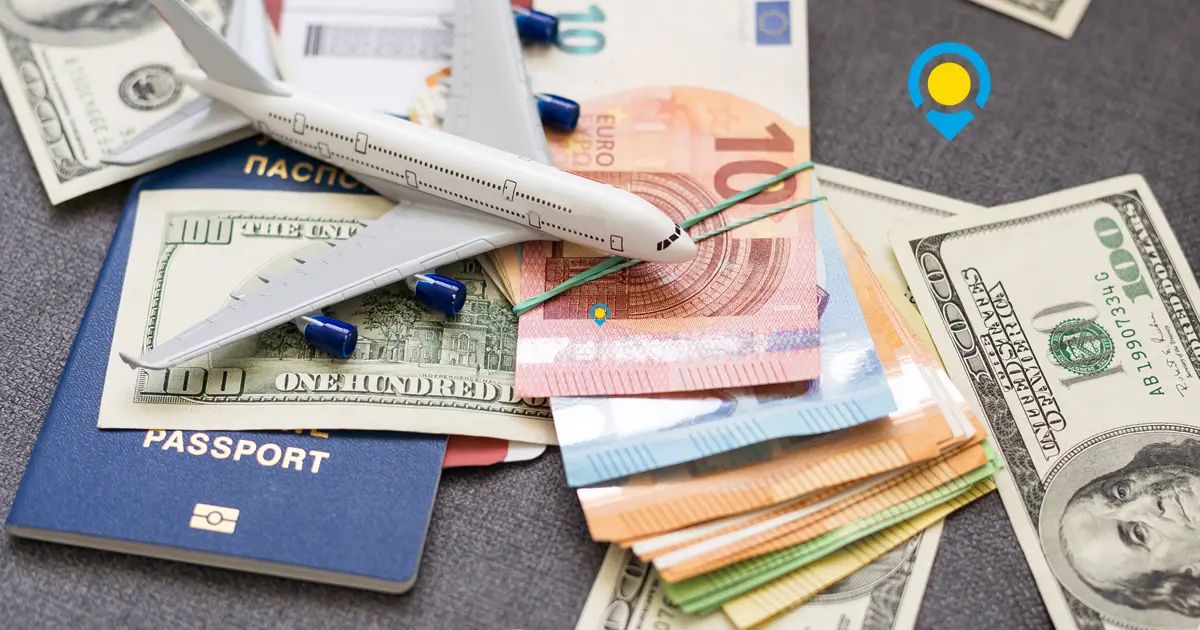
Navigating foreign currency and banking abroad requires foresight to avoid unnecessary fees and stress.
- Notify Bank/Credit Card Companies: Inform your bank and credit card providers of your travel dates and destinations. This prevents them from flagging your overseas transactions as fraudulent and freezing your cards.
- Multiple Payment Methods: Don’t rely on a single card. Bring at least two credit cards (Visa/Mastercard are most widely accepted) and a debit card. Also, carry a small amount of the local currency for immediate needs like taxis or small purchases upon arrival.
- Understand Foreign Transaction Fees: Be aware that many credit and debit cards charge a foreign transaction fee (often 1-3%) on purchases made in a foreign currency. Consider applying for a travel-friendly credit card with no foreign transaction fees.
- Emergency Cash Fund: Stash a small amount of cash ($50-$100 USD equivalent) in a separate, secure place as an emergency backup.
- Budgeting: Before you leave, create a realistic budget for your trip, estimating daily costs for food, transportation, activities, and souvenirs. Track your spending while traveling to stay on track.
- Currency Exchange Rates: Familiarize yourself with the current exchange rates to avoid being overcharged. Avoid exchanging money at airports if possible, as rates are often poor. Use ATMs affiliated with major banks for better rates.
Health & Safety: Prioritizing Your Well-being
Your health and personal safety are paramount. A little preparation goes a long way in ensuring a secure and healthy trip.
- Consult Your Doctor: Schedule a visit with your physician 4-6 weeks before your trip. Discuss recommended vaccinations, any necessary preventative medications (e.g., for malaria), and general travel health advice specific to your destination (e.g., food and water safety).
- Research Local Medical Facilities: Know where the nearest reputable hospitals or clinics are located in your destination, especially if you have pre-existing conditions.
- Understand Local Safety Conditions: Check travel advisories from your government (e.g., U.S. Department of State, Philippine Department of Foreign Affairs). Be aware of common scams, areas to avoid, and local laws that might differ from your own.
- Share Itinerary with Trusted Contacts: Leave a detailed copy of your itinerary (flights, accommodations, key activities) with a family member or close friend at home.
- Register with Your Embassy/Consulate: For international travel, many countries offer a service (like the U.S. Smart Traveler Enrollment Program – STEP) where you can register your travel plans with your embassy or consulate. This allows them to contact you in an emergency (natural disaster, civil unrest) or if a family member needs to reach you urgently.
Home & Pet Care: Ensuring Smooth Operations While Away
Don’t let worries about your home detract from your travel enjoyment. A few simple steps can ensure everything runs smoothly while you’re gone.
- Secure Your Home: Lock all doors and windows, activate your alarm system, and put a hold on mail and newspaper deliveries. Consider using smart home devices to control lights remotely, giving the impression of occupancy.
- Arrange for Pet Care/House Sitter: If you have pets, arrange for a trusted friend, family member, or professional pet sitter. Provide them with detailed instructions, emergency contacts for your vet, and payment information. If using a house sitter, ensure they understand all household operations.
- Turn Off Unnecessary Appliances: Unplug electronics that draw “phantom” power, and consider turning off your water main if you’re leaving for an extended period to prevent leaks.
- Pay Bills: Ensure all bills due during your travel period are paid in advance or set up for automatic payments.
- Clear Perishables: Empty your refrigerator of any food items that might spoil while you’re away. Take out the trash.
- Provide Emergency Contacts: Leave contact information for a trusted neighbor or local friend for any home emergencies.
Transportation & Navigation: Getting Around Smoothly
Pre-planning your movement within your destination can save time, money, and frustration.
- Research Local Transport Options: Understand the public transportation system (buses, trains, subway), availability of ride-sharing apps (Uber, Grab, Bolt), and taxi services. Know typical fares and operating hours.
- International Driving Permit (IDP): If you plan to drive abroad, check if your driver’s license is valid or if you need an International Driving Permit, which is typically required in conjunction with your domestic license.
- Offline Maps: Download offline maps of your destination (e.g., via Google Maps or apps like Maps.me) to navigate even without internet access.
- Public Transport Apps: Many major cities have dedicated apps for their public transport systems, offering real-time schedules and route planners.
Communication: Staying Connected
Decide how you’ll communicate with loved ones back home and stay connected locally.
- International Roaming vs. Local SIM vs. eSIM vs. Portable Wi-Fi:
- International Roaming: Often the most expensive option. Check with your home provider for international plans.
- Local SIM Card: Usually the most cost-effective for data. Purchase upon arrival. Ensure your phone is unlocked.
- eSIM: A digital SIM that allows you to activate a local plan without a physical SIM card. Convenient for compatible phones. Services like Airalo or Holafly offer global eSIM plans.
- Portable Wi-Fi Hotspot: You can rent or buy these devices, providing Wi-Fi for multiple devices.
- Emergency Numbers: Learn the local emergency numbers for police, ambulance, and fire services. Have your embassy’s emergency contact number readily available.
- Download Messaging Apps: Ensure you have common messaging apps like WhatsApp, Messenger, or Viber to easily communicate with family and friends.
III. What to Plan: Crafting Your Journey’s Blueprint
Planning is the creative stage, where your travel dreams take shape. While spontaneity is wonderful, a solid plan ensures you make the most of your time and resources.
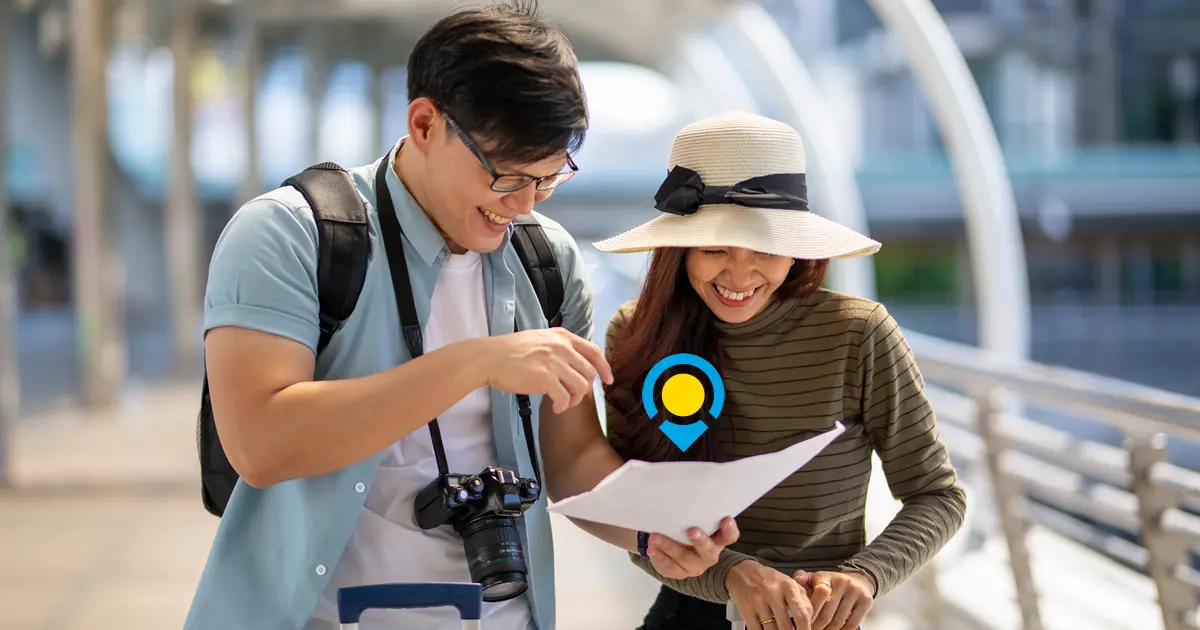
Itinerary & Bookings: The Skeleton of Your Trip
Your itinerary doesn’t have to be rigid, but having a general framework ensures you hit your must-sees and avoid aimless wandering.
- Outline Daily Activities: Research attractions, museums, landmarks, and experiences you want to have. Group activities by location to minimize travel time.
- Book Flights and Accommodations: Secure these well in advance, especially during peak season, to get better prices and availability.
- Book Major Tours/Activities: For popular attractions or specific tours (e.g., guided city tours, safaris, cooking classes), book these ahead of time to guarantee your spot.
- Consider Transportation Between Cities/Regions: If you’re moving between different locations, plan how you’ll travel (train, bus, domestic flights) and book tickets if necessary.
- Flexibility vs. Fixed Plans: Decide on the balance. Some travelers prefer a loose itinerary with plenty of free time, while others like a packed schedule. Ensure your bookings allow for some flexibility if your style is more spontaneous.
Research: Becoming an Informed Traveler
Knowledge is power, especially when traveling. Understanding your destination beyond the tourist brochures can enhance your experience and keep you safe.
- Local Culture, Customs, and Etiquette: Learn about local greetings, dining customs, dress codes (especially for religious sites), and any social norms. A little respect goes a long way.
- Common Scams to Avoid: Research typical tourist scams in your destination to be prepared and avoid falling victim.
- Basic Phrases in Local Language: Learning a few basic phrases (hello, goodbye, please, thank you, excuse me, where is the bathroom, how much?) can greatly enhance your interactions and show respect.
- Local Cuisine and Dining Tips: Explore local dishes, find recommended restaurants or food markets, and understand tipping customs.
- Emergency Services Contact Information: Reiterate knowing the local emergency numbers.
- Current Events/Political Stability: Briefly check the news for any major events or political unrest that could impact your trip.
Budgeting: Financial Blueprint for Your Adventure
A well-planned budget prevents financial surprises and allows you to enjoy your trip without constant money worries.
- Estimate Daily Expenses: Research average costs for food (eating out vs. cooking), local transportation, entry fees for attractions, and minor purchases.
- Allocate Funds for Unexpected Costs: Always build in a buffer for emergencies or spontaneous splurges. A good rule of thumb is an extra 10-15% of your total budget.
- Track Spending During the Trip: Use a simple app or a notebook to keep track of your expenditures. This helps you stay within your budget and avoid overspending.
- Research Currency Exchange Rates: Understand the value of the local currency against your home currency.
Activities & Experiences: Tailoring Your Adventure
This is where you personalize your trip to match your interests.
- List Must-See Sights and Experiences: Prioritize what truly excites you.
- Book Popular Attractions in Advance: For places with limited capacity or high demand (e.g., Eiffel Tower tickets, Vatican City tours), booking online ahead of time can save hours waiting in line.
- Factor in Downtime and Relaxation: Don’t overschedule. Build in time for leisurely meals, relaxing in a park, or simply soaking in the atmosphere.
- Consider Unique Local Experiences: Look beyond the main tourist traps. Research local festivals, markets, cooking classes, or guided tours that offer a deeper insight into the local culture.
Contingency Planning: Preparing for the Unexpected
Even the most meticulously planned trips can encounter bumps in the road. Thinking ahead about potential problems can minimize their impact.
- Flight Delays/Cancellations: Know your airline’s policy, travel insurance coverage for delays, and potential alternative routes.
- Lost Luggage: Keep essentials in your carry-on (as mentioned in packing), and know how to file a claim with the airline and your travel insurance.
- Getting Sick/Injured: Know how to access medical care, understand your travel insurance’s medical coverage, and have your medical information (allergies, conditions) readily available.
- Lost/Stolen Documents: Know the location and contact information for your country’s embassy or consulate. They are your first point of contact for replacing lost passports.
- Backup Plans for Activities/Accommodations: If an activity is canceled or an accommodation isn’t as expected, have a quick backup idea or research alternative options beforehand.
- Emergency Contact Information Easily Accessible: Beyond your phone, have written copies of crucial numbers.
- Share Your Plans: Always provide a copy of your full itinerary, including flight details, accommodation information, and contact numbers, to a trusted family member or friend back home. This person can be your point of contact in case of an emergency and can help track you down if needed.
Conclusion
The joy of travel lies in discovery, in experiencing the new and the unknown. By diligently working through this ultimate travel checklist-what to Pack, what to Prepare, and what to Plan-you empower yourself to fully embrace that joy. No more frantic last-minute scrambles, no more nagging doubts about forgotten essentials. Instead, you’ll embark on your journey with a sense of calm, confidence, and excitement, knowing that every detail has been thoughtfully addressed. So, take a deep breath, review your checklist, and get ready. The world is calling, and you are ready to answer its call, equipped with everything you need for an incredible, stress-free adventure. Happy trav

